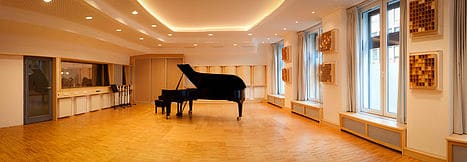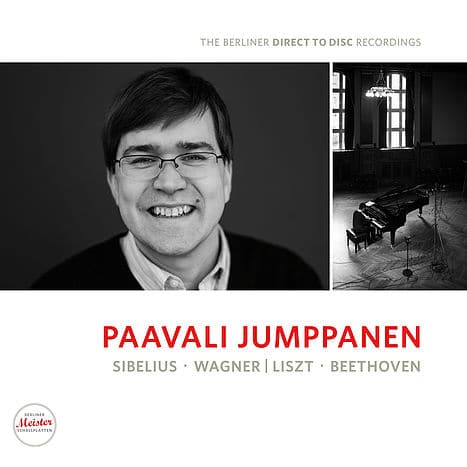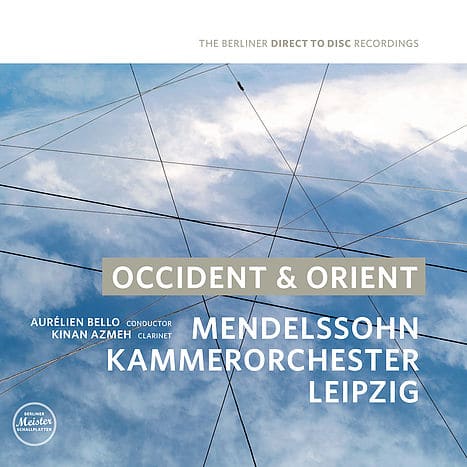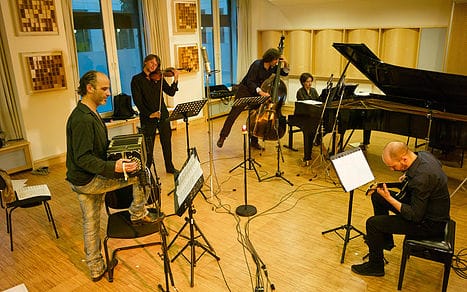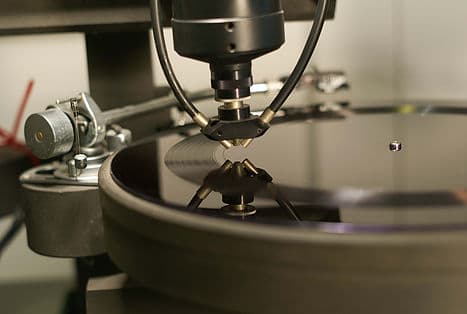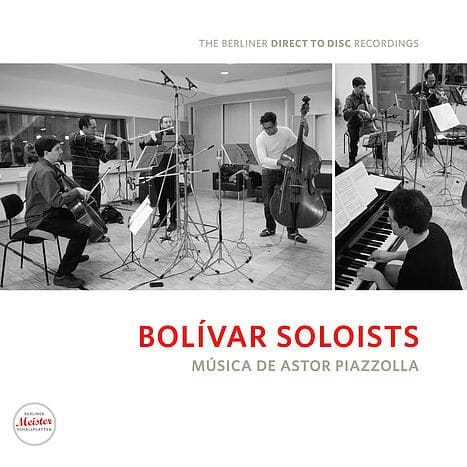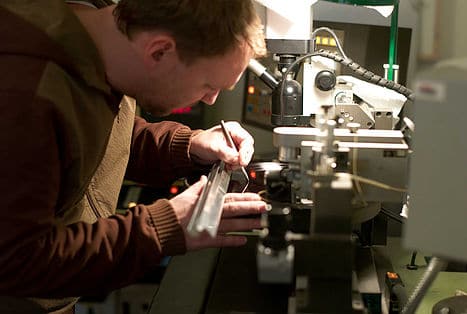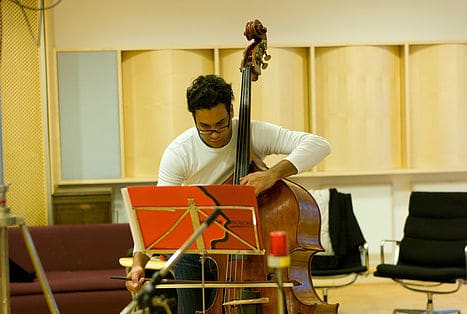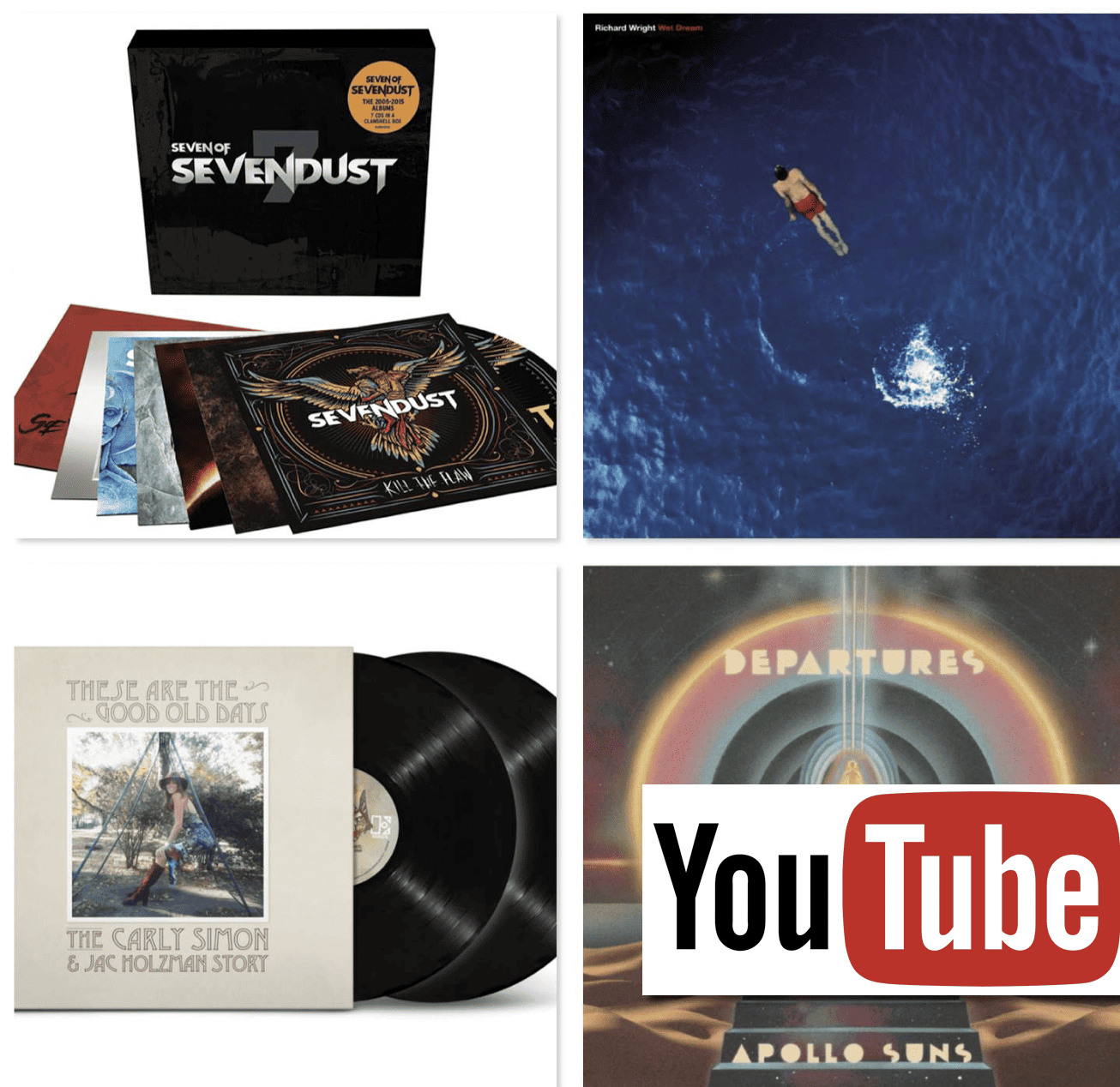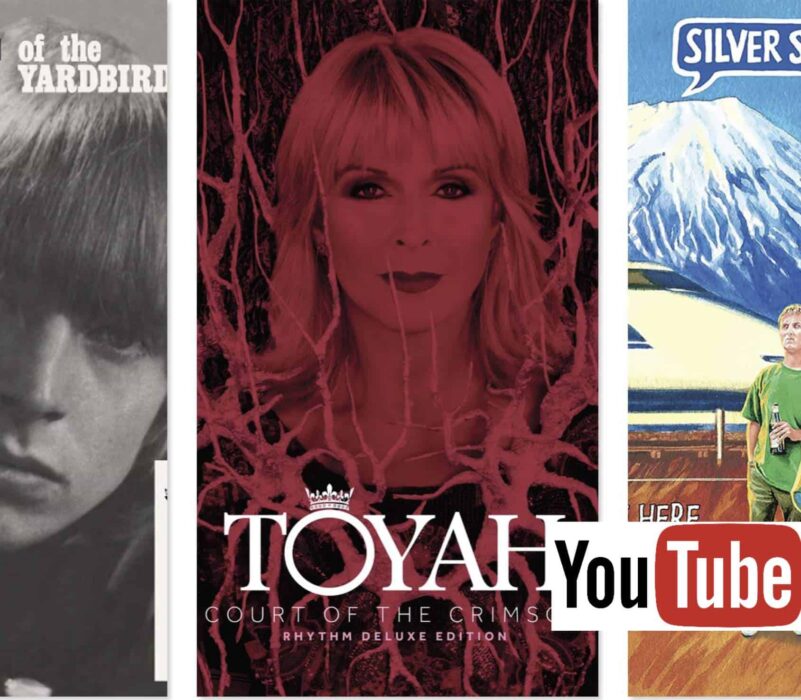The Article
Direct To Berlin: Rainer Maillard, Recording Engineer/Producer and owner of Berliner Meister Schallplatten
23rd March 2016
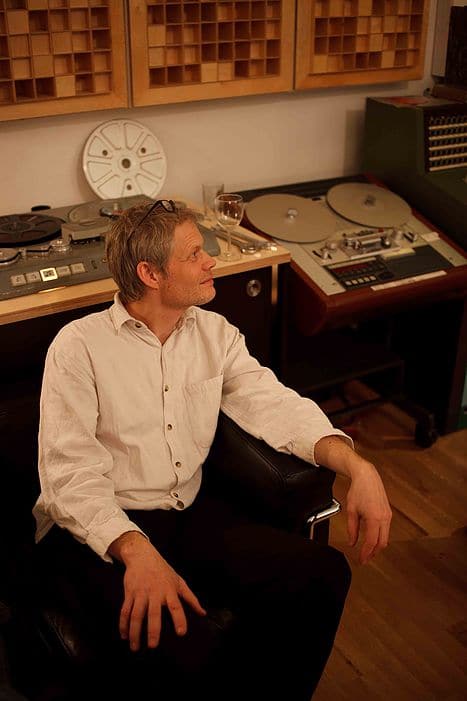
Germany’s respected classical label, Berliner Meister Schallplatten, talks to Paul Rigby about its Direct-To-Disc recordings
Direct-To-Disc (DTD) is a simplified vinyl recording technique. Instead of recording music in the studio to tape, to be then mixed and mastered and eventually pressed to vinyl, DTD does away with all of that as the music is played and sent direct to the cutting lathe with mixing done on the fly.
The technique was popular in the early to mid-seventies but is now resurgent with several companies investigating the process.
Germany’s Berliner Meister Schallplatten (BMS), which records in the Emil Berliner Studios is arguably the most venerated of all corporations to adopt the technique.
The studio is a former recording facility for Deutsche Grammophon and has been in the DG fold for 100 years, although :, has been attached to the company for rather less time, “I started as a recording engineer in the 80s, handling recordings of Bernstein. In 2008, Universal/DG decided to out-source all recording activities. They asked us to buy all of the equipment and so we did. We still record for DG but we also connect with other companies. At this time, the recording business was totally digital. We had one analogue facility, based in an office in Hannover.”
The reason? Emil Berliner, who was the founder of Deutsche Grammophon and also EMI and the inventor of the gramophone, was born in the city. In 2009, that facility was moved to Berlin, into a building with recording rooms and a small concert hall attached. Maillard looked at the combination: recording facilities, vinyl cutting machine and concert hall and wondered how the combination could be best utilised.
“Because cutting machines were comparatively rare we thought that Direct-To-Disc recordings would be a good idea,” said Maillard. “Not many studios can do this. The other point was that I was educated in analogue. Soon after I began working, though, everything converted to digital. Initially, it was great to edit and mix in this way. We were proud to use digital equipment. DG was strong in this area for classical recording. During the last few years, though, I began to have doubts.”
These doubts didn’t surround the hoary old question of analogue vs digital or vinyl vs CD. The problem was centred more on the work flow.
“With digital tools, almost everything is possible,” said Maillard. “You can manipulate, edit and mix. The trouble is, in recording sessions, musicians tend to think that, ‘I don’t have to be so well prepared, it can be sorted out in post production.’ Last year I made a recording of one of Beethoven’s Sonatas but the artist couldn’t record a whole movement all the way through. He couldn’t do it. It was recorded step by step. The digital tools took over the process of doing the record. Not a good thing. Some artists have become lazy.”
With digital, the very fabric of how we view recorded music and its structure, has changed. Now, you don’t need to source good recording locations any more, for example. If it doesn’t sound great, digital plug-ins will improve that. You don’t need as many recording hours because editing will take care of that. If the singer is not well then you can do an overdub later. In the analogue world, all of this was not possible, of course.
“Three years ago, I thought, ‘What are we doing here?’” said Maillard “The digital processing was not good for the product. More time was being spent in post-production than in the initial production. It took away from the performance.”
This meant, when Maillard undertook his first Direct-To-Disc (DTD) performance, he had no post production to look forward to, “In DTD, you do the recording and it goes directly to the lacquer disc. It’s similar to a live recording. If the groove is cut, it is finished. Everything you want to achieve is then done before the recording begins or while the recording is happening. You have to start to practice, decide on the order because of the vinyl space and the different sides. It’s the opposite of digital recording,” said Maillard.
While Maillard and his colleagues perfected the technique, initial business forays stumbled. Possible clients showed plenty of interest but no commitment. So Malliard decided to form his own label, BMS, and do it himself.
There are problems, though. For example, some musicians will not take part. You can guess why, “You must perform very well,” said Maillard. “You cannot remove mistakes. You have to play on the beat or sing in tune.”
Direct-To-Disc, therefore, separates the men from the boys, as it where. Those with genuine talent and those that depend on technology to fill in their inadequacies.
“With DTD, you are restricted to special musicians. Secondly, you cannot move the machine out of the studio so that means that you’re restricted to space, which means no operas. In theory, with enough money, you could do it but it’s a large undertaking,” said Maillard.
During the DTD process, Maillard shuns any digital equipment, it’s pure analogue all the way through. That includes the mixing desk, microphone and even echo effects. For the latter, you would normally use a Lexicon unit or plug-in. Maillard uses his own staircase. That’s right, the stairs.
“The preparation has to be precise,” said Maillard. “Everything has to be clear. The levelling, the length of the pieces, the mix, the solo and so on. You need more man power for a DTD recording too. Even someone to stop other people running into the studio. With a digital recording, you could stop and make an edit. With DTD, everything is lost. You also have to be sure that no one has a mobile phone on. Basic things like that. In the digital world, you can put your feet on the table and press a button. With DTD, that is not possible.”
BMS also utilises a Neumann lathe but, because tape is not used, there is not room for the important Preview facility within the recording process, which is used in conjunction with master tape. The latter improves efficiency, changing the space in between the grooves on the disc depending on what type of music it sees coming down the ‘pipe’. Without the Preview facility, all of the grooves are evenly spaced along the vinyl side, taking up more physical space and reducing playing time from around 24 minutes to 19.
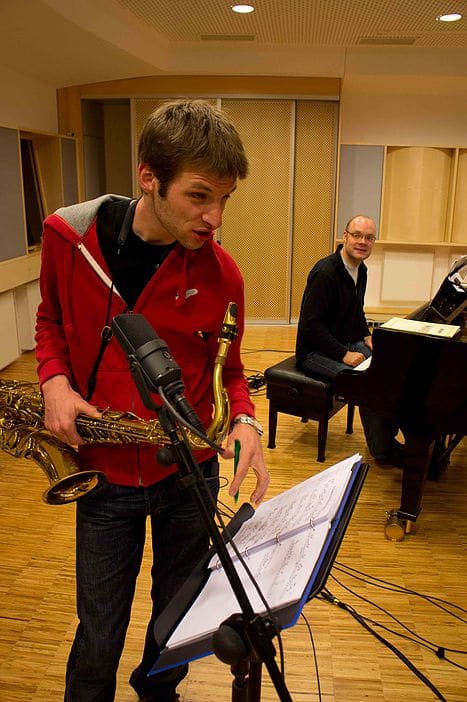
Initially, no ‘archive’ except the cut disc itself was retained. Now, a parallel recorded master tape is created to enable the artist to hear the recording after the event and a CD version is also cut to help BMS monitor the test pressing and the performance of the cutting plant facility. Neither the tape or CD is ever commercially released, however.
So what is the industry’s response to DTD, now they have seen it in action and releases ‘in the wild’?
“A lot of people are very interested,” said Maillard. “Some musicians, when I talk to them…think. They think about how they could do such a recording. A lot of musicians are fascinated but others are wary. The big companies, DG for example, know what we do but they don’t think that this is a product for them. They do clean productions and they see this as a very small market in a small market.”
So what about the public itself? “You have to explain it. There is a difference between sound and pictures, you don’t have to explain production in pictures. If you see a movie, you see an edit. There is an Oscar regularly available for best movie editing. With audio, it’s almost impossible. If it’s good, you not supposed to even hear the edit. It’s hard to gauge the work of the engineer in DTD and the fact that there are no edits compared to the many inserted to a typical CD production. Hence, to explain the advantages and disadvantages of DTD is not so easy in editing terms.
“At the moment, the sales are not great but I love the results of DTD. We give something to the music lovers that is more than a mere file. We are offering a unique performance. It’s an original. A bit like buying an original Picasso etching (DTD) or buying a poster of the same (CD). There is more joy to be had in the original.”
As you can see, DTD is still in its infancy for both the industry and the public. The question is, though, is it really worth the effort? The toil, the investment, the preparations, the mistakes, the retakes, the extra manpower, the extra hassle and money involved? In terms of the final sound output, most certainly. Firstly, you get a sparkling performance. The artists are on their game. This is live, it’s one take and they know that one mistake ruins the entire take. So there is more energy and more adrenalin in the performance itself. In terms of the technical aspects, you hear less distortion, more drive, greater dynamics, enhanced detail, especially at the ends of the sonic spectrum. If you get the chance, buy Direct-To-Disc. You won’t regret it.
To learn more, click www.berlinermeisterschallplatten.de/en/start
UNEXPECTED INCIDENTS
Recording on Direct-to-Disc can often provide surprising events when the band enters the studio.
“We had a band with a singer in to record DTD. They were from New York,” said Maillard. We rehearsed for two days and then was just about to do the recording when the guitar player said that he was hungry. He said that, when he was hungry, he couldn’t perform at 100%. So we said, ok, we eat first. Before we could arrange for food, though, the bass player then said, ‘If I order a pizza I will need a two hour gap to be able to perform 100%.’ They then started to discuss what time they could make the recording. I was smiling at this. This kind of discussion you will never find in a normal production.”
CHANGING MICs
“For the DTD production, we had a completely new microphone set-up. For example, for the piano, there are phase issues cutting direct to a groove. With CD you can use A-B microphones but the vinyl groove doesn’t like phase or deep frequencies because the vinyl pick-up moves up and down instead of right and left. The cutting is not so easy without distortion and there is a risk of the cutter jumping out of the groove. All engineers in the 60s tried to avoid this. These days, modern productions are difficult to cut to a groove because of deep frequency phase plus power in the high frequencies. We have to avoid all of this. The microphone set-up is the first method of tackling this, not the mixing.”

